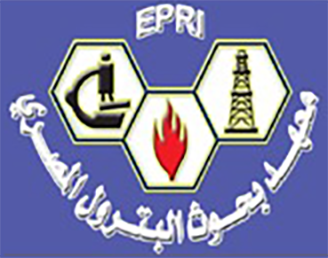Article Type
Research Paper
Highlights
- A response surface modeling-based design of experiments was conducted to optimize the laboratory water (polymer) drive-CO2 cyclic injection process.
- Reduction in viscosity, formation of foamy oil, and swelling of oil were determined to enhance heavy oil recovery.
- The key parameters including injection pressure, soaking time/period, pressure drawdown rate, and polymer concentration were shown to influence fractional oil recovery during heavy oil production significantly.
- The fractional oil recovery was successfully optimized using Response Surface Methodology Central Composite Design.
- The accuracy of a response surface modeling-based design of experiments to model and predict the fractional oil recovery during water (polymer) drive-CO2 cyclic injection process was validated with sand filling model (SFM) apparatus.
Abstract
The development of heavy oil reservoirs has gained increasing interest in recent times, given the increasing energy demand and the depleting light and medium oil reserves. However, the thin pay zone characteristics of most heavy oil reservoirs lead to low fractional recovery when conventional recovery methods, such as water drive, solution gas drive, thermal methods, etc., are used. This low fractional recovery of the recovery processes drives the need for exploring other recovery options. This study optimizes the water-CO2 cyclic injection process using a sand-filling experimental model to enhance the productivity of these challenging thin-pay zone reservoirs. The results obtained from the experimentation emphasize three factors that enhance the productivity of heavy oil: reduction in viscosity, formation of foamy oil, and swelling of oil. The central composite design method within response surface modeling was used to design, correlate, analyze, and optimize key operating parameters to enhance fractional oil recovery. The key parameters include injection pressure, soaking period, pressure draw-down rate, and polymer concentration in the injected water. At 95% tolerance level, the optimized model could predict the fractional oil recovery in terms of operating parameters to an acceptable degree of accuracy (p-value of 0.025). When applied to parameters from a Nigerian Niger Delta field, the model predicted an optimal fractional oil recovery of 0.4989. This optimal recovery was achieved with an injection pressure of 2000 psia, a soaking period of six days, a pressure draw-down rate of 3.7172 psi/min, and a polymer concentration of 2394 ppm in the injected water.
Keywords
Oil swelling factor, Foaming oil, Sand filling model, Pseudo bubble point pressure, Response surface modeling, Minimum miscibility pressure
Recommended Citation
Adeyanju, Olusiji Ayoade and Olaide, Joseph
(2025)
"Optimization of Water Injection-CO2 Cyclic Process in Heavy Crude Oil Low Permeability Reservoirs,"
Egyptian Journal of Petroleum: Vol. 34
:
Iss.
2
, Article 8.
Available at: https://doi.org/10.62593/2090-2468.1076
Creative Commons License

This work is licensed under a Creative Commons Attribution-NonCommercial-No Derivative Works 4.0 International License.







